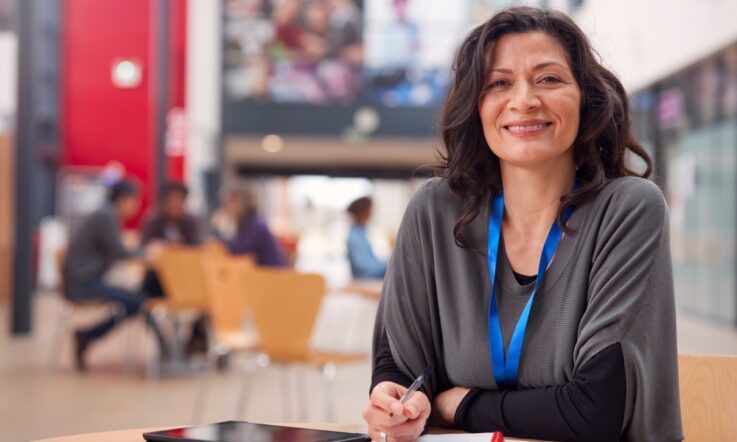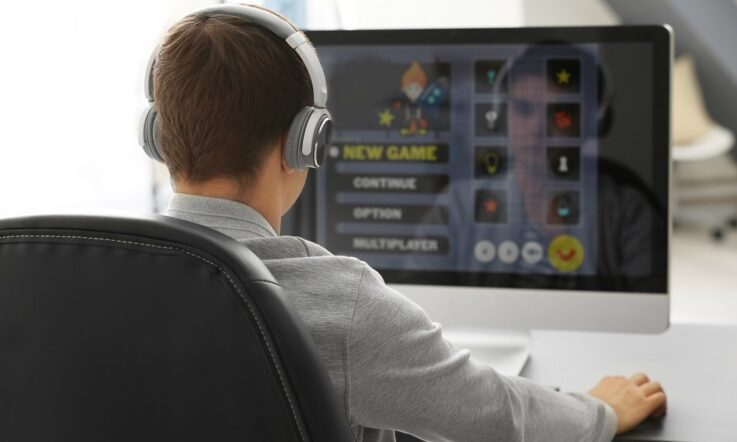This podcast from Teacher is supported by Bank First, the bank built by teachers, for teachers. Visit offers.bankfirst.com.au or speak to us to find out how your home loan or savings can care for the community like you do.
Thanks for tuning in to this episode of Teacher Staffroom, where we catch you up on the latest evidence, insight, and action. I'm Rebecca Vukovic.
Video games are a favourite pastime of both children and adults alike, and schools are therefore using them to engage students in their lessons. This month on Teacher, we published a reader submission by Dr Troy Meston that explored how digital gaming motivates Indigenous learners in primary school. We also sat down with educator Melissa Tindall to chat about how she tasked her year 5 and 6 students with designing their own video games. In today’s episode, we share highlights from these pieces, and explore some of the other podcasts and articles we’ve published this month. There’s a lot to cover so let’s jump straight in.
The Deadly Gaming action research project has set out to investigate how the use of digital gaming might engage and motivate Indigenous learners in the primary school years. In a reader submission published on Teacher, project leader Dr Troy Meston shares details of the initiative and some of the early findings.
The focus of this initiative investigated how the use of gaming, with PlayStations, Nintendo Switches and iPads, might engage and motivate learners, generating crossover opportunities into mainstream classroom and learning capabilities, such as literacy and STEM.
Here’s a quote from the article:
Findings highlight students felt empowered to share their expansive knowledge of the digital world. In these language encounters, we saw the power dynamic flip – where the researchers and teachers would be introduced to the new or technical language associated with gaming, the internet, YouTube and social media. Students also demonstrated leadership, guiding the uninitiated adults through the rigours of device set-up, downloading new content, and how to solve tech or connectivity issues.
Here's something to think about:
How do you provide opportunities for students to share their knowledge in the classroom, with other students and teachers?
In this pilot, the school’s STEM room featured ‘a seated yarning circle, Aboriginal and Torres Strait Islander flags, Indigenous floor mats, and culturally attuned gaming posters’. How are you creating culturally safe spaces for your own learners?
Still on the topic of gaming, earlier this month we published an article about year 5 and 6 students from MidCoast Christian College in regional New South Wales who were tasked with designing their own video games. We sat down with educator Melissa Tindall to talk about the process of designing the games from scratch, and how it allowed students to explore the 21st Century skills of critical thinking, creativity, collaboration and communication.
The students then entered their games into the Australian STEM Video Game Challenge – an annual competition where students participate in coding and design to create a playable game. A key feature of the challenge is collaboration, as students can work in teams of up to 4 participants to complete the video game. Here’s how Tindall described students working together towards a common goal.
‘They need to listen to each other’s ideas and address problems and pitch solutions and decide the best course of action … it's good for those listening skills and talking to each other and working towards that common goal together, because then they get to achieve their goal as a team.’
Here’s something to consider:
In your school context, do students have the opportunity to participate in authentic STEM learning activities? Has this enhanced student engagement?
How do you allow students to explore and develop the skills of critical thinking, creativity, collaboration and communication in a hands-on way?
Before we jump into our next highlight, here’s a quick message from our sponsor.
You’re listening to a podcast from Teacher magazine supported by Bank First. Bank First is proudly customer-owned, built by people just like you. Being customer-owned means we can divert our profits to support initiatives you care about, like $750 000 towards grass-roots initiatives in schools since 1983. Your Bank First home loan can get you into your own home and support education for our kids. Visit offers.bankfirst.com.au for more information.
Caring for the wellbeing of students has also been a key topic of interest on Teacher this month. We published two really insightful pieces on the topic of bullying, that looked at the impact bullying has on students’ wellbeing. The first I’d like to share was a podcast episode we recorded with Professor Ken Rigby – Adjunct Professor at the University of South Australia and a leading international researcher in the area of bullying in schools. It covered the changes over the last 20 years in the way schools have understood and dealt with bullying, what incidents may look like in different age groups, signs for teachers to be on the lookout for, and elements of a school anti-bullying policy.
Here's Professor Rigby discussing the importance of students knowing and seeing their school’s anti-bullying policy.
One of the things I did discover (to my horror) was when I asked children ‘has the school got an anti-bullying policy? Have you seen it?’ Half the students said ‘no, we've never seen it. We don't know whether they've got one’. That was horrifying, I thought. I asked the teachers by the way ‘do you let the students see the policy?’ … ‘Oh, yes, of course’. But then you ask the students and it didn't turn out to be the case, only about half of them, and more in the primary school than in the secondary. The primary schools were more proactive, if you like, than the secondary. It wasn’t a matter of little kids not knowing what a policy is and older children knowing; they simply didn't, there was no effort being made to share the policy with the students. That's so important.
Here are some questions you could discuss with colleagues in your next staff meeting.
Does your school have an anti-bullying policy? Is the policy shared with all staff? What about parents? Are students aware of the anti-bullying policy and have they seen a copy?
Thinking about your current policy – when was the last time it was reviewed? Which are the areas you feel you’re doing well in? And, where do you think improvements are needed?
The second piece on bullying that I’d love to tell you about was a submission from Dr Roberta Thompson, a Research Fellow at the Griffith Institute for Educational Research. In her article, she discusses strategies to help teachers feel more confident in dealing with cyberbullying, related research findings, and helpful resources.
Here is a quote from Thompson’s article where she shares her view on the best approach to cyberbullying intervention.
I see the best approach to cyberbullying intervention as one that includes students, teachers, and parents working together to devise strategies to co-manage the behaviour. This interdependent effort calls for cooperation and collaboration from all sides and is not without substantial effort.
In my experience, providing opportunities for young people to work together with teachers and other adults to generate solutions is useful for coming to understand what they do online, how they do it, and why they do it. With this information in hand, students, teachers and parents can co-design interventions that meet the local demands and specific needs of students.
After reading the article, here are two questions to consider:
Thinking about the cyberbullying interventions at your own school, do they meet the ‘local demands and specific needs of students’? How do you know?
That’s all for today’s episode and you’re all caught up on the latest evidence, insight and action. Links to all the content and resources I’ve mentioned will be in the transcript of this podcast available over at our website, teachermagazine.com. Before I let you go, it would be great if you could take just a few moments to give a rating of our podcast if you’re listening to this audio on Apple podcasts or Spotify. If you’re listening on the Spotify app, just click on the three dots, then ‘rate show’, and if you’re listening on the Apple podcasts app you’ll find the rating section by scrolling to the bottom of our podcast channel page. On Apple podcasts, you’re also able to leave a short review for us. Leaving us a rating or a review helps more people like you to find our podcast, and is a really big support for our team. Thanks for taking the time to support the work we’re doing.
You’ve been listening to a podcast from Teacher supported by Bank First, the bank built by teachers, for teachers. Visit offers.bankfirst.com.au or speak to us to find out how your home loan or savings can care for the community like you do.



